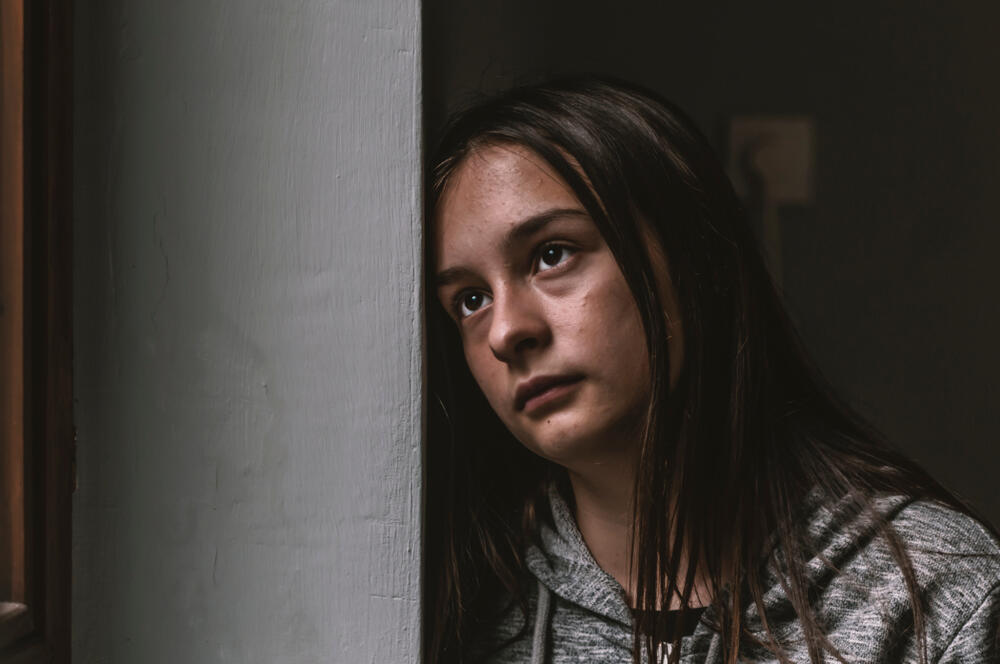Every child and adolescent is a world unto themselves. Every child has their own unique life story, and any attempt to generalize and treat adolescents as a single group would undermine their individual truth.
More stories:
However, accumulated clinical experience and years of research allow us to identify common thinking patterns among youths with suicidal thoughts and tendencies.
5 View gallery


It's adolescents' mental distress that distorts their thinking patterns
(Photo: Shutterstock)
It’s important to recognize these signs, both to identify warning signs of self-destructive behavior that may appear in our children and to use this knowledge as a basis for effective communication with troubled youth.
These thinking patterns aren’t rational. Nevertheless, they tend to appear in at-risk youth and are not directly related to the adolescent’s intelligence – rather, it’s their mental distress that distorts their thinking patterns.
It’s critical to understand how the child truly feels, even though these things are not objective or realistic.
What to look out for
"I don’t have anyone" – a feeling of loneliness. Adolescents with suicidal tendencies differ from one another in many ways and experience emotional pain and distress for various reasons: social, emotional, interpersonal and more.
They experience grief over a deceased person, an ended relationship or a blow to their sense of self-worth, for example. However, there’s one common characteristic that generally applies to all: The individual experiencing a crisis feels a profound sense of loneliness and lack of belonging.
5 View gallery


The individual experiencing a crisis feels a profound sense of loneliness and lack of belonging
(Photo: Shutterstock)
Don't forget that the feeling of loneliness is subjective and can persist even when the adolescent is surrounded by good friends and family who love and appreciate them.
"You’ll be better off without me" – the feeling of burdening others. Adolescents in crisis are aware of the concern of their families and the energy directed toward their treatment. They notice that you’re troubled, that you lose work days "because of them," or give up enjoyable activities to be with them, which strengthens their feeling that they’re a burden.
Many suicide notes end with the sentence: "I won't be here, and you'll be better off without me," symbolizing their sense of a lack of belonging and burdening others.
"Nothing will ever change, the pain will last forever" – cognitive distortions. In addition to the often-irrational feeling of loneliness, adolescents exhibit certain thinking patterns that exacerbate crisis situations and lead to cognitive distortions.
For example, they tend to see the world in black and white, and struggle to see and imagine their future. These thinking patterns increase the risk of suicidal tendencies. Adolescents often feel as if their current emotional pain will last forever, and they lack the cognitive ability to see that this crisis is temporary and will pass.
Therefore, it’s important to remember (and to remind our children) that while loss is final and absolute, crises are temporary and will likely pass with time.
"After I'm gone, I’ll have the recognition I deserve" – magical thinking. Children's and adolescents' perception of death isn’t accurate. They don’t always see death as final and, therefore, they may think that their suicidal tendencies will bring about a "positive change in their lives."
In crisis situations, they may be tempted to believe that things will work out to their benefit after they’re gone, thinking that suicide can somehow alter their lives as if it’s not truly final. For example, adolescents may say things like, "After I'm gone, everyone will understand how hard it was for me, and then I’ll receive recognition, attention and love."
"Suicide is the only way out" – tunnel vision. In many cases, the adolescent is immersed in feelings of hopelessness, pessimism and lack of hope, saying things like, "There’s no chance that anything will change."
In clinical terms, this thinking pattern is called tunnel vision, which describes the inability to see any alternative course of action or outcomes, accompanied by rigidity and mental constriction. In such a state, the person feels as if they’re in a tunnel where the only escape is through suicidal behaviors.
One way to try and understand what tunnel vision is like is to recall a topic, problem or dilemma that each of us recently dealt with. How many options did we see? How many thoughts did we have on the way to making a decision? Surely, we could think of different possibilities, examine them and try different approaches to solve the issue.
Tunnel vision is a state in which these possibilities are no longer there. The base standing in the decision-making process is absent, and the individual’s usual problem-solving techniques, which involve alternatives, are replaced by rigidity, dichotomy and a sense that there’s only one solution remaining.
Therefore, tunnel vision combined with unbearable emotional pain can be extremely dangerous.
A positive in the negative
In contrast to these thinking patterns, there are other, more optimistic characteristics in at-risk teens that are important to recognize and utilize:
"Even in my toughest moments, there’s a part of me that wants to live" – ambivalence. It’s crucial to know that adolescents and youths, even those who strongly desire death, are simultaneously searching for a way to keep their lives.
Clinical and research experience teaches us that the person experiencing suicidal ideation is ambivalent; alongside their desire to die, there are also voices within them saying they want to live, even if they aren’t always acknowledged.
5 View gallery


Alongside their desire to die, there are also voices within them saying they want to live, even if they aren’t always acknowledged
(Photo: Shutterstock)
Ambivalence holds great significance in preventing suicide because it clarifies that there’s always hope for change. By acknowledging these positive voices that exist in parallel to negative ones, we emphasize that you can “kill your emotional pain without killing yourself.”
Furthermore, we often hear suicidal adolescents say that "more than wanting to die, I can't continue living like this." These words highlight the emotional pain and distress at the core of suicidal thoughts, emphasizing the importance of providing guidance and strategies to reduce distress that will help mitigate suicidal risk.
The suicidal crisis is temporary. The torment of suicidal impulses and thoughts comes and goes, often intensifying at night.
Therefore, it's critical to pay attention to moments of crisis, and risky situations (such as arguments, difficulties in attending school and coping with intense interpersonal events), and to be more attentive in such circumstances. It’s important to equip adolescents with appropriate coping strategies, even when their suicidal thoughts arise when they’re by themselves.
Prof. Yossi Levi Belz is an authorized clinical psychologist and chair of the Rupin Academic Center’s Center for Suicide and Mental Pain Studies.
Dr. Hili Kochavi is an educational psychologist, lecturer and faculty member of the Faculty of Psychology at the College of Law and Business in Israel.



